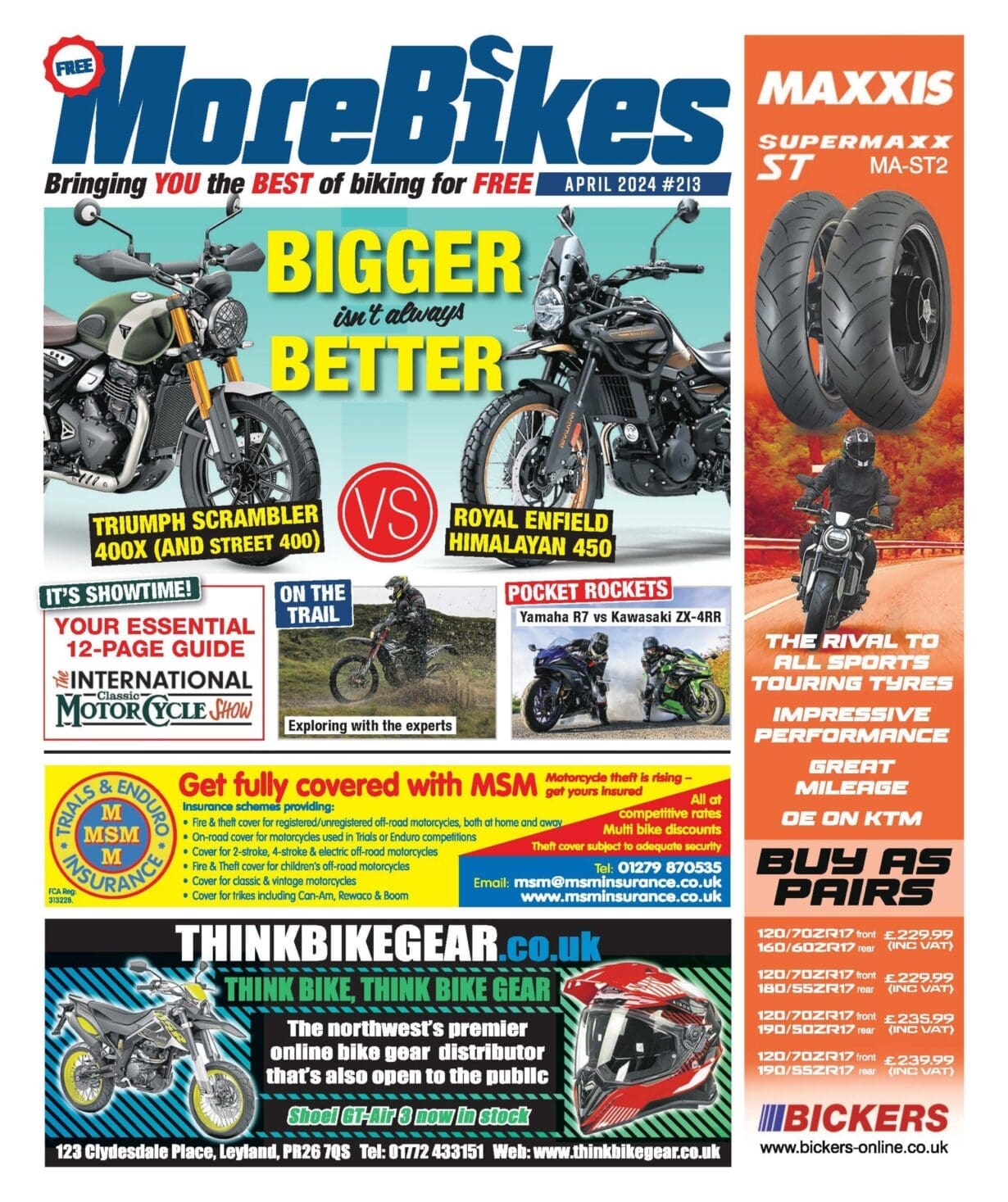
Words: Boothy | Images: Chappo
You only have to take one look at these two models to see that a lot has changed over 20 years. But what exactly does two decades of development mean for Triumph’s flagship naked bike? There was only one way to find out…
Whilst we were all busy worrying about whether or not the millennium bug was going to initiate a self destruct sequence on our plasma screened desktop computers, the good people of Hinckley were working on a machine that, along with the Daytona (on which it was based), would reignite the brand’s popularity the world over. And I’m glad they did because 20 years later I found myself astride reader Nick Mowbray’s gleaming example of said motorcycle, the Speed Triple 955i.
But what for, and why, I hear you ask? Well, the last 20 years have been pretty exciting times as far as new bikes go, with more powerful engines, lighter and more efficient chassis, better suspension, and that’s not to mention all the electronic systems that adorn all our super-modern space-aged superbikes; things keep getting faster, easier to ride and (arguably) safer.
Enjoy everything More Bikes by reading the monthly newspaper, Read FREE Online.
But how much have bikes really changed? And how far have Triumph got in their quest for the perfect motorcycle? We wanted to find out, so what better way to do that than to pitch their beautiful brute from yesteryear directly against the latest version of the same magnificent machine, the current Speed Triple 1050 RS.

The test of time
When the 955i came along, superseding the T509 with its 955cc engine, it was considered pretty cutting edge, with its fuel-injected engine and its 120bhp. It was a man’s bike. Big, bulky and brutish it may have been, but under-seat cans and a single-sided swinging arm gave the Speed’ the ‘edge’ that made it stylish as well as substantial.
The more I looked at the thing, the more it struck me as a kind of halfway house between the modern and the retro; its aggressive stance wouldn’t look out of place in a supernaked line-up even today, but its twin round headlights are a real throwback to the days of old.

Both bikes have a very distinctive three-cylinder whirr (it’s all very ‘Triumph’), but they do sound quite dissimilar. The 1050 has a smoother, slightly quieter tone with a slight whistle to it, whereas the 955i sounds a little lumpier and slightly more agricultural. Once you have mustered the strength to heave the 955’s heavy clutch in, the gearbox obligingly does its thing and before you know it, you’re on your way.
Ground control
In fact, ‘control’ seemed to be the name of the game on the new bike. Traction control, cruise control, as well as all the other rider aids you can think of – well, most of them. And to compare the 955’s jerky gear changes with the 1050’s ’shifter and ’blipper aided gear changes would be like comparing a musket with an M-16; rather than being slow, lumpy and awkward, gear shifts on the modern bike were fast, precise and easy. On the more open roads, the slight jerkiness of the 955 soon became a thing of the past, as once we got up to the exciting end of the rev range, the three-cylinder motor was beautifully smooth.
The 955 had considerably less poke compared to its modern day counterpart, and it wouldn’t have stood a chance in a drag race, but once you got the thing rolling along, it felt just as elegant. Whilst the 955 mightn’t have had the power that the 1050 did, the refreshing thing about it was that all the power that the bike did have was available as soon as you opened the throttle, with no electronic systems castrating the fun.

For the full feature, pick up the March 2020 issue of Fast Bikes. For more information on how to get your hands on a copy, click HERE.
Advert
Enjoy everything More Bikes by reading the MoreBikes monthly newspaper. Click here to subscribe, or Read FREE Online.



